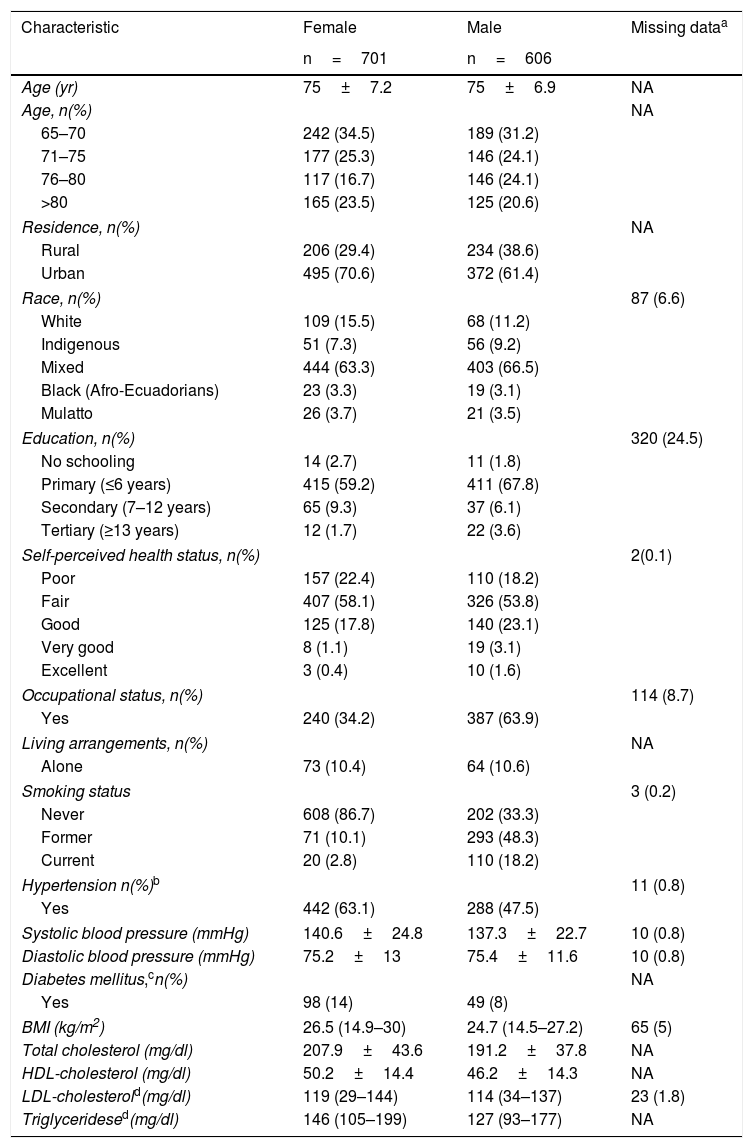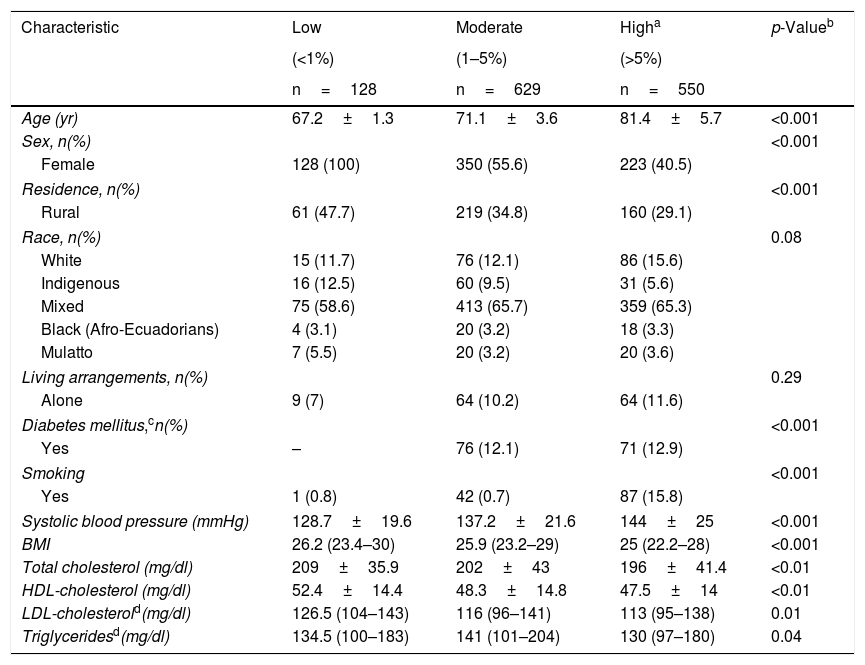Cardiovascular disease (CVD) mortality is predicted to increase in Latin America countries due to their rapidly aging population. However, there is very little information about CVD risk assessment as a primary preventive measure in this high-risk population.
Material and methodsWe predicted the national risk of developing CVD in Ecuadorian elderly population using the Systematic COronary Risk Evaluation in Older Persons (SCORE OP) High and Low models by risk categories/CVD risk region in 2009. Data on national cardiovascular risk factors were obtained from the Encuesta sobre Salud, Bienestar y Envejecimiento. We computed the predicted 5-year risk of CVD risk and compared the extent of agreement and reclassification in stratifying high-risk individuals between SCORE OP High and Low models. Analyses were done by risk categories, CVD risk region, and sex.
ResultsIn 2009, based on SCORE OP Low model almost 42% of elderly adults living in Ecuador were at high risk of suffering CVD over a 5-year period. The extent of agreement between SCORE OP High and Low risk prediction models was moderate (Cohen's kappa test of 0.5), 34% of individuals approximately were reclassified into different risk categories and a third of the population would benefit from a pharmacologic intervention to reduce the CVD risk.
ConclusionsForty-two percent of elderly Ecuadorians were at high risk of suffering CVD over a 5-year period, indicating an urgent need to tailor primary preventive measures for this vulnerable and high-risk population.
La mortalidad por enfermedad cardiovascular (ECV) se incrementará en América Latina debido al rápido envejecimiento de su población. Sin embargo, existe poca información sobre la evaluación del riesgo de ECV como medida de prevención primaria en este grupo de alto riesgo.
Material y métodosSe predijo el riesgo nacional de desarrollar ECV en la población adulta mayor ecuatoriana utilizando los modelos Systematic COronary Risk Evaluation in Older Persons (SCORE OP) High y Low, por categorías de riesgo y región en el año 2009. Se obtuvieron datos nacionales sobre factores de riesgo cardiovascular de la Encuesta sobre Salud, Bienestar y Envejecimiento. Se calculó el riesgo a 5 años de desarrollar ECV y comparamos el grado de concordancia/reclasificación entre modelos SCORE OP High y Low para estratificar a los individuos con alto riesgo. Se realizaron análisis por categoría de riesgo, región y sexo.
ResultadosEn 2009, según SCORE OP Low, aproximadamente el 42% de los adultos mayores en Ecuador tuvieron un alto riesgo de presentar ECV en un período de 5 años. El grado de concordancia entre los modelos de predicción SCORE OP High y Low fue moderado (prueba de kappa: 0,5), alrededor del 34% de los individuos fueron reclasificados en diferente categoría de riesgo y un tercio de la población se hubiera beneficiado de una intervención farmacológica para reducir el riesgo de ECV.
ConclusionesEl 42% de la población adulta mayor ecuatoriana tuvo un alto riesgo de presentar ECV en un período de 5 años, mostrando una urgente necesidad de intervención de prevención primaria en esta población vulnerable de alto riesgo.











